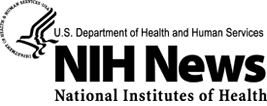Last updated: July 31, 2012
NHGRI selects new scientific director for intramural research

NHGRI selects new scientific director for intramural research
Daniel L. Kastner, M.D., Ph.D., pioneered genetic studies of inflammatory diseases
Bethesda, Md., Mon., Aug. 30, 2010 — Daniel L. Kastner, M.D., Ph.D., has been selected to be the Scientific Director of the National Human Genome Research Institute (NHGRI), NHGRI Director Eric D. Green, M.D., Ph.D., announced. Dr. Kastner currently serves as the Clinical Director and the Director of Translational Research at the National Institute of Arthritis and Musculoskeletal and Skin Diseases (NIAMS). NHGRI and NIAMS are two of the 27 institutes and centers that make up the National Institutes of Health. Dr. Kastner will assume his position at NHGRI in early October.
"As both a basic researcher and a practicing physician, Dr. Kastner will bring ideal expertise and leadership credentials to the NHGRI," Dr. Green said. "He will effectively provide broad oversight to the diverse genetics and genomics research activities within our intramural program, from the essential basic science that produces important discoveries to the clinical research that investigates how to capitalize on those discoveries to advance medical care."
As Scientific Director, Dr. Kastner will lead NHGRI's Division of Intramural Research (www.genome.gov/DIR), the groups of researchers, physicians, and support staff conducting scientific and clinical studies within NHGRI's Maryland laboratories in Bethesda, Rockville, and Baltimore. Founded in 1993, NHGRI's intramural research program consists of about 50 faculty-level investigators and some 500 other professional staff members, including staff scientists, various types of trainees, technicians, medical professionals, and administrative personnel. The program's research agenda is organized into seven branches that range in focus from medical genetics and cancer genetics to genome technology to social and behavioral research. These investigators carry out basic genomic research involving cell and animal model systems, as well as clinical research involving human subjects, such as gene therapy trials and the Undiagnosed Diseases Program, in which individuals who have mysterious illnesses come to the NIH in hopes of a diagnosis and treatment. The NHGRI intramural research program operates with an annual budget of approximately $105 million.
Throughout his career, Dr. Kastner has combined genetics and genomics with clinical research. "Genomics has truly allowed us, in less than a generation, to cut through the modern-day Gordian knots of cell biology and biochemistry to get at the root causes of human suffering," he said. "The opportunities to relieve that suffering are at once breathtaking and daunting. I am confident that the staff assembled in the NHGRI intramural research program is perfectly positioned to succeed in these challenges, drawing not only upon its own considerable talents but also upon the unrivaled translational resources of the NIH Clinical Center and the breadth and depth of expertise across the NIH intramural community."
Since coming to NIH, Dr. Kastner has established a highly productive career by moving back and forth between basic research and patient care. This pattern began shortly after his arrival as a medical staff fellow in rheumatology in 1985, when he encountered a man in his early 20s who suffered monthly bouts of fever and arthritis, symptoms that started in infancy. The joint pain and fever would only last a few days and then go away. No one knew what was wrong with the man until an Israeli colleague suggested Familial Mediterranean Fever (FMF), an inherited condition common in countries surrounding the Mediterranean Sea. After confirming the diagnosis, Dr. Kastner decided to find its genetic roots.
The research led to the discovery of the gene encoding pyrin, a previously unknown protein in a physiological pathway that regulates inflammation through interleukin 1, a substance produced by white blood cells. Researchers describe physiological pathways as interconnected chemical reactions controlled by proteins, and the interleukin 1 pathway induces fever and inflammation, part of the body's defense against infections. In a normal person, the body turns off inflammation as quickly as possible because it can damage normal tissue. In FMF patients, Dr. Kastner discovered a mutation in the pyrin gene that causes inflammation to be turned on much of the time, producing cycles of fever and painful arthritis.
This discovery led to the recognition of some 20 different proteins similar to pyrin that regulate inflammation. It also has led to promising new therapies targeting interleukin 1 for FMF patients who are unresponsive to or intolerant of colchicine, the previously established treatment for this illness.
"These findings certainly set the stage for us to understand more broadly how certain genes are involved in inflammation and apoptosis (or cell death)," he said. "It also allowed us to perform genetic testing on individuals with undiagnosed recurrent fever syndromes," so as to determine which patients had mutations in the pyrin gene and which had other causes. This led to a series of discoveries about other inflammatory diseases, such as Familial Hibernian Fever or Irish Fever - which turns out to be caused by dominant mutations in the gene encoding the tumor necrosis factor (TNF) receptor, a key part of another pathway that also regulates inflammation. Because the illness occurs in patients of many different ethnicities, and because of the involvement of TNF, Dr. Kastner's group renamed the disease TNF-receptor associated periodic syndrome or TRAPS. With the discovery of TNF's involvement, many TRAPS patients are now successfully treated with etanercept (Enbrel), a medication that modulates the TNF pathway and prevents the inflammatory attacks.
With his colleagues Drs. Ivona Aksentijevich and Raphaela Goldbach-Mansky, Dr. Kastner's group made similar discoveries about neonatal multisystem inflammatory disease, or NOMID, a debilitating disorder in which children are born with hives and have recurrent fevers, abnormal bone growth and recurrent meningitis, which may ultimately cause brain damage. Their research led to identifying the genetic mutation and the affected pathway, resulting in successful clinical trials with anakinra (Kineret) that essentially reversed the symptoms. "Within a day of starting the drug, their hives went away," he said. "Serial MRIs (a type of brain scan) showed that the chronic meningitis disappeared in about three months." The affected individuals must get a daily injection of the medication for the rest of their lives - just like an insulin-dependent diabetic - but it reverses the disease.
"The discovery of these disease genes has led to life-changing treatments for these patients," Dr. Kastner said. His group has proposed a now widely-accepted class of diseases, the systemic autoinflammatory diseases, which include FMF, TRAPS and NOMID. They manifest seemingly unprovoked inflammation without the autoantibodies usually seen in autoimmune diseases such as systemic lupus erythematosus. The autoinflammatory diseases often involve inherited abnormalities in innate immunity, a branch of the immune system that serves as the first line of defense against microorganisms. The discovery of the genes underlying these illnesses has shed new light on the innate immune system and has provided the scientific basis for treatments directed at the specific causes of these patients' illness.
"Our group's interest for the last 20 years has been studying patients with Mendelian and complex genetic disorders of inflammation," Dr. Kastner said. "We have discovered genes and pathways involved in the regulation of inflammation that can then be targeted for treatment in those patients -- or better, targeted in people with a variety with other inflammatory diseases. By understanding what genes and pathways regulate inflammation, we can find ways to intervene in a variety of inflammatory conditions."
In 2010, the National Academy of Sciences recognized Dr. Kastner's contributions to this field of research by electing him a member.
Born in Lockport, N.Y., Dr. Kastner received his A.B. in philosophy from Princeton University in 1973. He then entered medical school at the Baylor College of Medicine in Houston. After the first two years, Dr. Kastner focused on microbiology and immunology research, earning a Ph.D. in 1979. He then completed his medical degree at Baylor in 1982, as well as a residency in internal medicine, including serving as chief resident in 1985, before moving to NIH.
In 1987, Dr. Kastner was named the Regina S. Loeb Arthritis Foundation Fellow in the Arthritis and Rheumatism Branch at NIAMS. In 1990, he became a senior staff fellow. In 1992, he was named acting chief of the Genetics Section in the branch, and in 1993 he became a senior investigator. In 1995, he was named chief of the Genetics Section of the Arthritis and Rheumatism Branch, and in 2001, the section was converted into the Genetics and Genomics Branch, which he continued to lead until 2009.
In addition to conducting his own research, Dr. Kastner began to take on additional leadership duties, including becoming clinical director and director of translational research at NIAMS in 2005. In 2008, he became the first NIH deputy director for intramural clinical research. Since 2009, he has been chief of the NIAMS Laboratory for Clinical Investigation, where he helps promote and facilitate clinical trials. At NHGRI, Dr. Kastner will maintain his current research laboratory and continue to see patients in the NIH Clinical Center, in addition to his administrative duties as scientific director.
Dr. Kastner is married and has two children.
NHGRI is one of the 27 institutes and centers at the NIH, an agency of the Department of Health and Human Services. The NHGRI Division of Intramural Research pursues a broad-based research agenda aiming to understand, diagnose and treat genomic and genetic diseases. Additional information about NHGRI can be found at its website, www.genome.gov.
The National Institutes of Health (NIH) - The Nation's Medical Research Agency - is the primary federal agency for conducting and supporting basic, clinical and translational medical research, and it investigates the causes, treatments, and cures for both common and rare diseases. For more information about NIH and its programs, visit www.nih.gov.
Contact
Raymond MacDougall, NHGRI
301-402-0911
